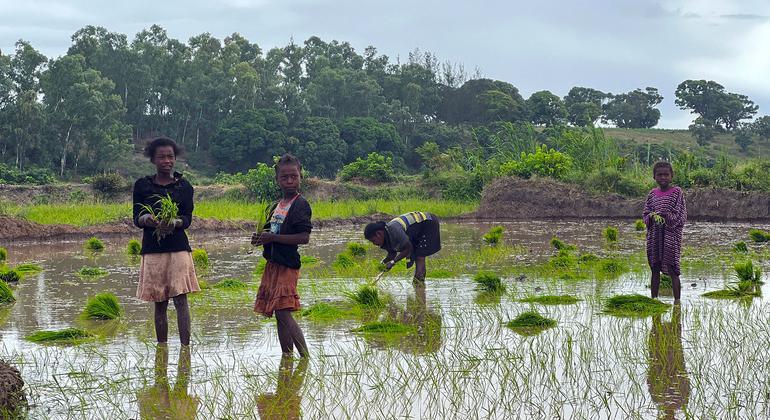The report, which will be published at the end of this month, reveals how between 2020 and 2024, the world experienced a dramatic increase in food prices driven by a combination of COVID-19 inflation, the war in Ukraine restricts food and basic products movements, and increased climate shocks.
“The episodes described in this publication mention what we call a perfect storm,” said bullfighter Cullen.
First, he explained that during the COVID-19 pandemic, governments launched fiscal stimuli and help packages, which increased demand and, therefore, global inflation.
The large -scale invasion of Russia of Ukraine aggravated this crisis. Before the war began in 2022, Ukraine was a key exporter of wheat, sunflower oil and fertilizers. The war not only restricted these exports, but interrupted trade routes and increased fuel costs and supplies, which amplified inflation worldwide.
In addition, increasingly frequent and intense climatic clashes in the main producing regions, such as droughts, floods and heat waves, further aggravated food inflation.
World impacts
Only in 2024 the prices returned to the levels prior to the coanjus, which means that households fought for several years to pay food, with important consequences.
As real wages fell while food prices increased, household purchasing power eroded. Households responded by buying cheaper and less nutritious foods, reducing the frequency of meals and, often, prioritizing meals for certain family members and reducing the intake of women and children.
Mr. Torero Cullen also explained that an increase in food prices correlates directly with an increase in moderate and severe food insecurity. The impacts of this were particularly hard in Africa and Western Asia, where the dependence on food import and monetary depreciation caused food to be even more expensive.
In addition, as food prices increased, nutritional results among children under five worsened. The Sofi report illustrated that an increase in the price of food of 10 percent led to an increase of 2.7 to 6.1 percent in moderate to severe waste, which has lasting effects on child development and public health systems.
In particular, these serious impacts were unequal, mostly affecting low -income and African countries, many of which are still seeing figures that worsen. During the peak of the crisis in January 2023, some low -income countries experienced food prices inflation of up to 30 percent, compared to 13.6 percent worldwide.
Policy recommendations
Mr. Torero Cullen finished his informative session when describing the recipes of detailed policies in the Sofi report.
First, he underlined the directed fiscal support. “Social protection measures are the most effective response to food price peaks,” he explained. “This will protect vulnerable populations without creating long -term fiscal risks or market distortions.”
He also stressed avoiding commercial interruptions, coordinating monetary and fiscal policies, improving market transparency and institutional preparation as essential components to avoid future crises.
“This Sofi emphasizes that inflation can undermine progress. Underlines our vulnerabilities, and also causes the importance of strengthening resilience, inclusion and transparency to avoid and minimize the risk of these problems,” he concluded.




